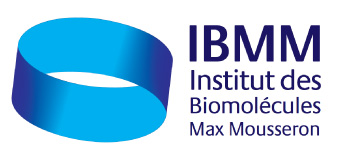Ionic liquids and electrochemical devices
Séminaire Chimie ED459
Dr. Anna
Le Jeudi 15 Décembre 2022 à 09h30
CNRS, Amphithéâtre Balard (bâtiment Balard RdC, 1919 route de Mende)
Date de début : 2022-12-15 09:30:00
Date de fin : 2022-12-15 10:30:00
Lieu : CNRS amphi Balard
Intervenant : Dr. Anna
Dept of chemistry and chemical engineering, Chalmers University of technology, Göteborg, Sweden
Ionic liquids are compounds only composed of ions that have a unique combination of properties, such as low vapor pressure, low flammability, huge compositional variation and tunable physicochemical properties, to mention a few. It is thus not a surprise that ionic liquids have attracted enormous attention for applications in catalysis, synthesis, as green solvents and in energy devices, and that they have an important role in the development of green chemistry.
The use of ionic liquids in devices, such as batteries, supercapacitors or fuel cells, is primarily motivated by their low volatility and high ionic density, given that ionic liquids are in principle made solely of ions. Whether this level of ionicity is a strict truth or not is still a current topic of debate, and research. When intended to operate in this type of devices, ionic liquids are used as electrolytes and are hence expected to provide a high ionic (or protonic) conductivity as well as good electrochemical properties at the interface with the electrodes.
Therefore, a thorough characterization by electrochemical methods is fundamental to push forward the development of ionic liquid-based materials of high performance. In this context, relevant methods are electrochemical impedance spectroscopy and dielectric spectroscopy, which we have used to study pure ionic liquids, ionic liquid mixtures and ionic liquid-based membranes.[1,2] However, I will also present results on the use of ionic liquids as templates during the electrochemically assisted self-assembly (EASA) method for the synthesis of mesoporous thin films with vertically oriented nanochannels.
Figure 1. Selected details of the electrochemically assisted self-assembly method here used with a long-chain ionic liquid. (see illustration in attached PDF abstract)
References
1. Zhao et al, Nature Communications 2019, 10, 1093.
2. Vavra et al, Microporous and Mesoporous Materials, in press (2020).
Contact local ICGM : Dr. Peter
